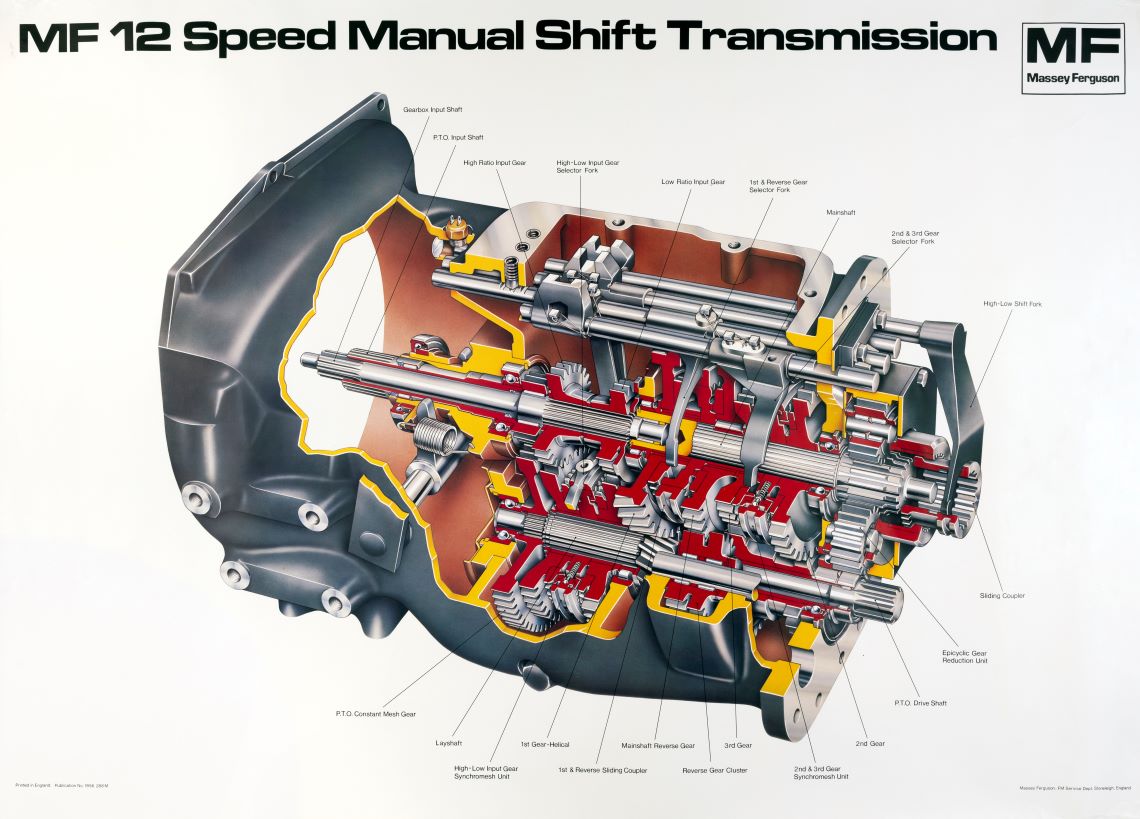Ploughing Pioneers: Tractor history through The MERL collections
-
Author
- Tim Jerrome
-
Published Date
- March 10, 2023

Nothing symbolises the modern English countryside quite like the tractor. Used predominantly for pulling farm implements, such as ploughs, tractors have accelerated agricultural production enormously in the last hundred years.
The MERL holds a treasure trove of archival documents which any researcher of tractor history would benefit from. This blog is your guide to how our collections reflect the story of this mechanised giant of the farming world, with our archives including records of Marshall, Deere, Ferguson and Brown, to name just a few. We’re not sure if there is a national tractor museum, but we’d like to stake our claim!
Click the links as they appear throughout the article and you’ll be taken to the relevant collections page, where you can begin your journey through the archives.Steam power on the farm – underrated or underwhelming?
It comes as a surprise to most that the mechanisation of farming did not begin with the tractor. Following the widespread success of the steam powered railway locomotive in the early 19th century, several pioneers attempted to apply steam to farm tasks. The UK was the leading nation in agricultural steam power, which in the case of ploughing involved two steam traction engines at either end of a field, powering a windlass that moved the plough back and forth. Dominating the market for agricultural steam machinery was John Fowler & Co, a company based in Leeds who exported all around the world. Another innovator of steam was Marshall, Sons & Co, who focused on steam traction engines, which were small tractor-like vehicles that moved independently. They were otherwise known as road locomotives to differentiate them from their railway counterparts.
So why isn’t British steam power on the farm celebrated more widely? Why were ploughs and other steam machines never as successful as the tractors that followed them? Put simply, animal power remained prominent throughout the years of steam inventions. Cable ploughing was only effective in dry conditions and with light soil, whereas a horse was more versatile. Traction engines also failed to impress throughout the breaking of prairie lands in Mississippi and Missouri around 1900, due to the vast quantities of water and fuel required. In most contexts, labour was far cheaper and more versatile than steam.
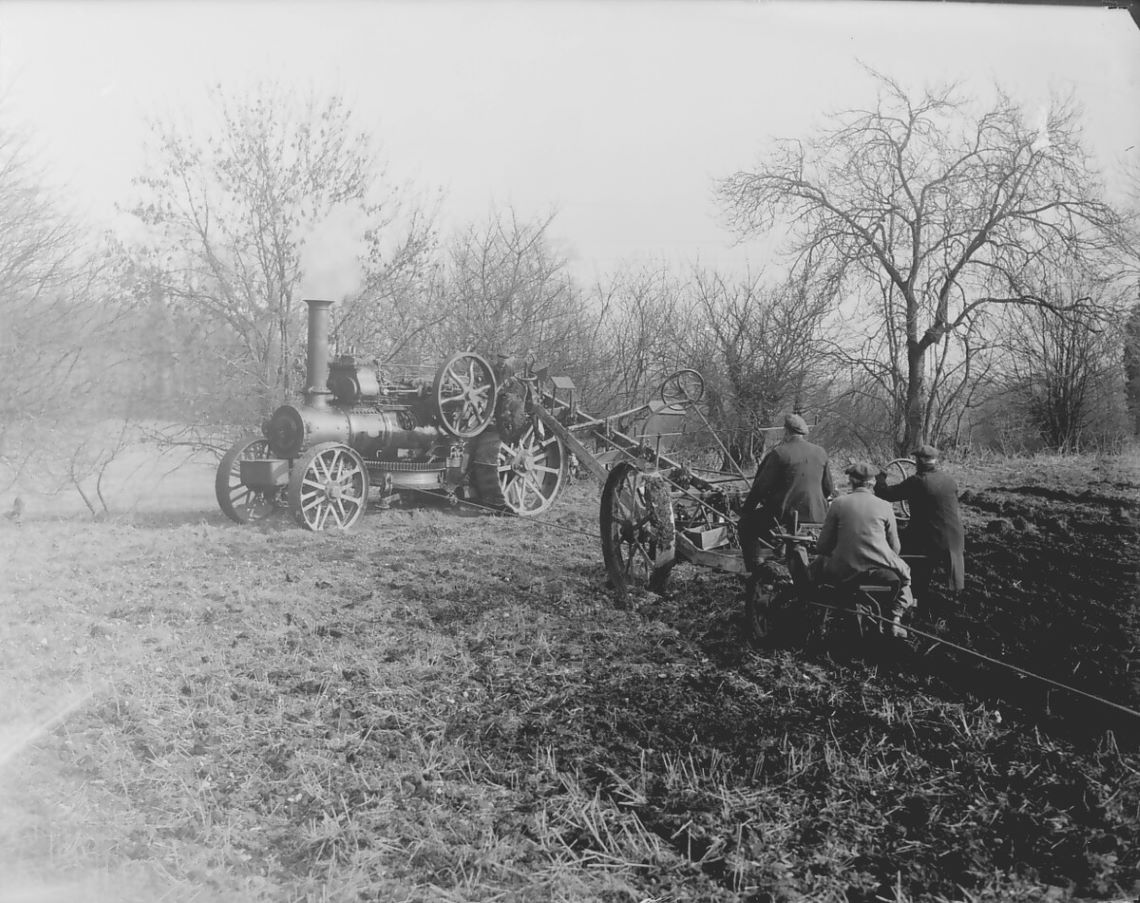
The Early Years – Bigger isn’t better
The rise of the internal combustion engine in the 1880s and 1890s had great potential for the farming world, with John Charter building the first oil powered tractor in 1889. Richard Hornsby & Sons sold the first tractor in the UK in 1897, and went on to sell… well, no others. In truth, early tractors were highly experimental and were little more than oil powered traction engines. There seemed to be a fascination with building bigger and more powerful machines, which just ended up being sluggish and hard to manoeuvre.Enter Daniel Albone, and the Ivel Agricultural Motor in 1903. Based in Biggleswade, Bedfordshire, Albone was a bicycle salesman and brought the principles of lightweight design to tractor manufacture. His invention was more like a car than a traction engine, and weighed far less than any road locomotive of the time. It was the forefather of the modern tractor more than any other machine, which contradicts the common perception of the tractor being an American invention. Documents relating to the Ivel Agricultural Motor exist within our Lee Irvine Archive.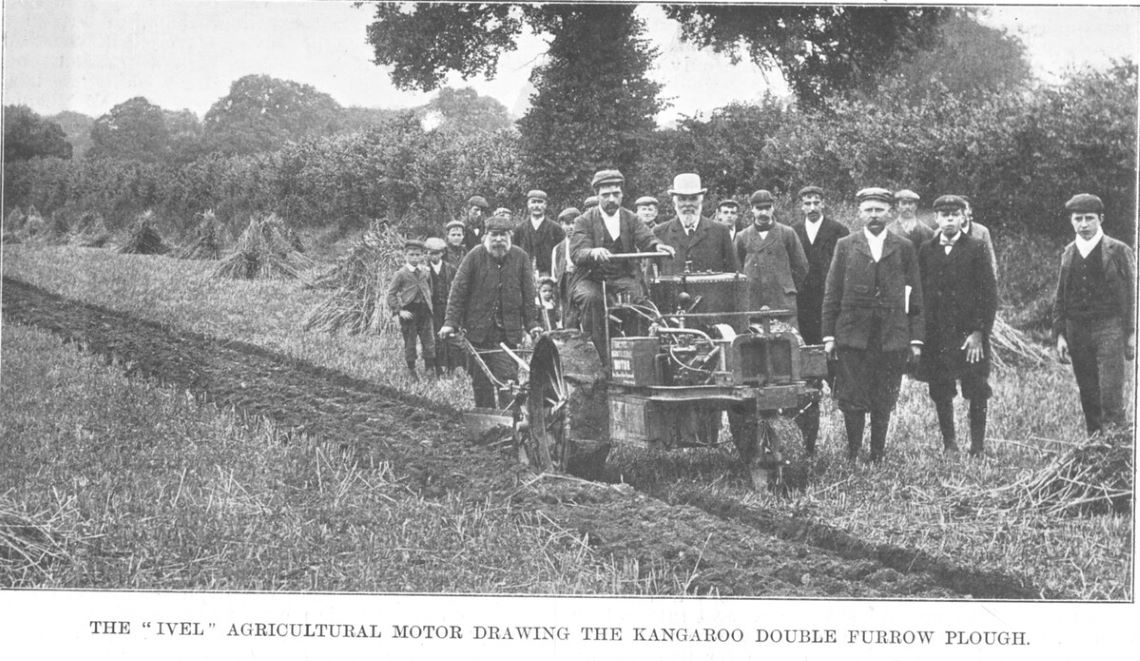
Throughout the following decade, England was the world’s largest tractor exporter. The giants of steam power either had to adapt and make their own tractors – like Marshall – or go into decline – like Fowler. A critical moment for the future of the tractor came in 1908, when the Winnipeg Industrial Exhibition held its first major show featuring these vehicles. This heralded something of a tractor frenzy in the USA, whilst similar shows held by the Royal Agricultural Society of England failed to garner similar interest.
This American enthusiasm for tractor manufacture first manifested as the ‘Waterloo Boy’, known also as the ‘Overtime’, which was exported in large numbers by the Waterloo Gasoline and Engine company. Based in Iowa, this company controlled the market in the early 1910s. It was also the foundation for John Deere & Co’s emergence into the field of tractors (no pun intended). Having purchased the Waterloo company in 1918, Deere enjoyed moderate success for many years, albeit in Ford’s shadow. However, it came emphatically back to the forefront in 1960 with the invention of four and six cylinder engine models, with the 4020 model becoming arguably the best selling tractor of all time. Our John Deere collection features leaflets and booklets, mostly dating to this period.
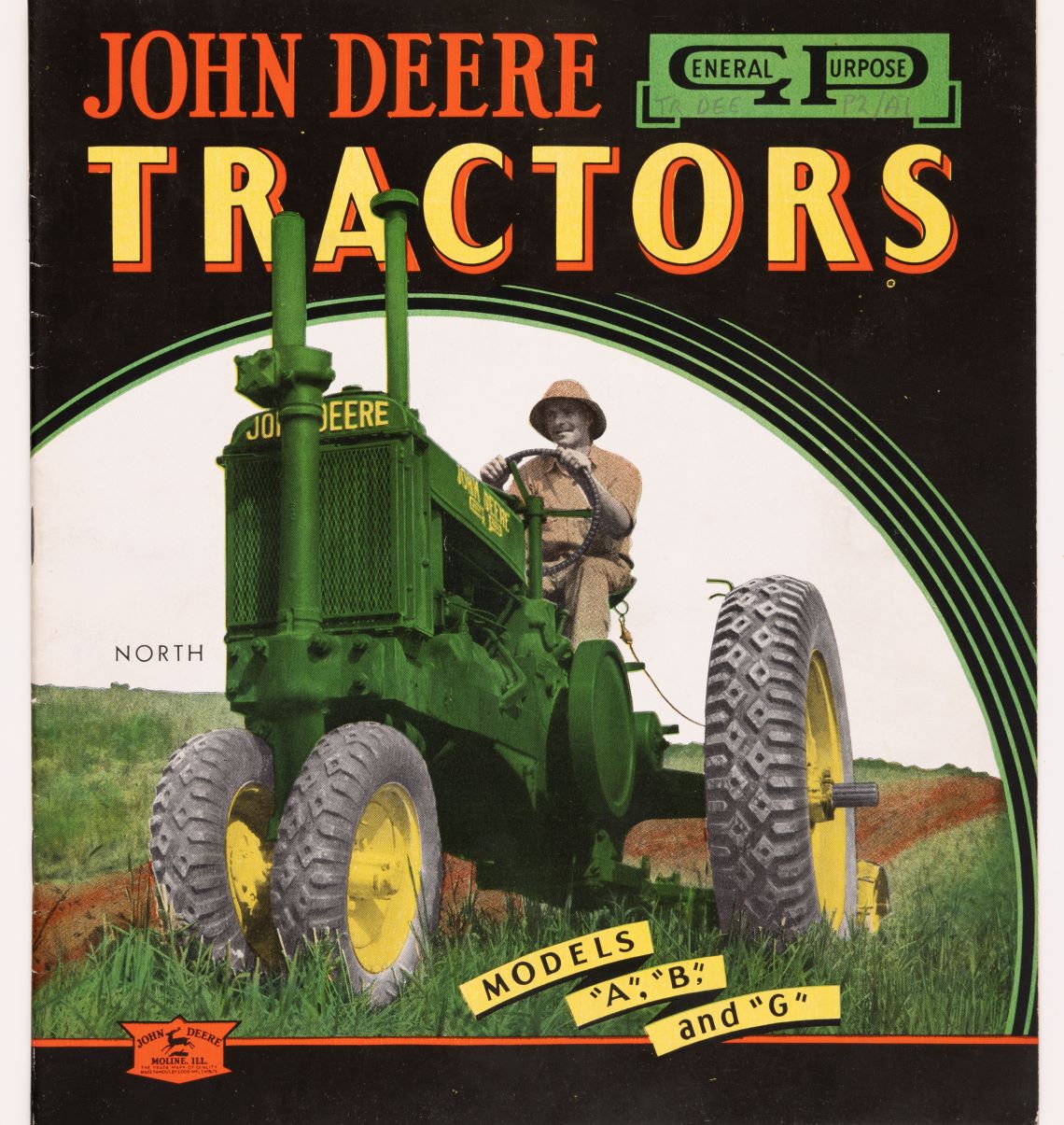
The Fordson – light, compact and dominant
Back to the 1910s, and the most iconic machine in across the history of tractors was on the horizon. Experimental tractor designs continued to rise and fall quickly, and they remained hugely expensive for the consumer. As with so many elements of English society, the First World War forced a change. Britain needed food, to both supply the Western front and become self-sufficient. Shipping produce from the USA across the Atlantic was inefficient and in this, the motoring pioneer Henry Ford spotted an opportunity. Tractors, as a concept, had already been proven to work with the Ivel and the Overtime. However, what was needed was a simple, cheap, light tractor that could be mass produced.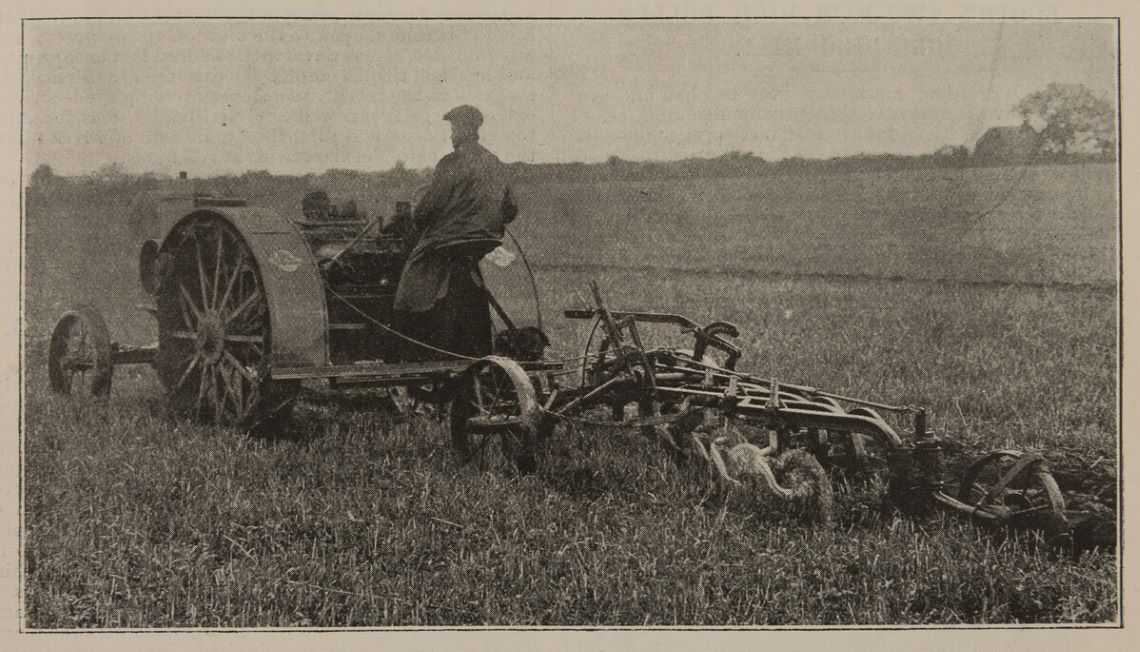
Ford turned his significant resources, gained from the success of the Model T car, to finding a solution. Eugene Farkas, his chief designer, came up with a frameless design which had engine, gearbox and rear axle as separate case iron units. The Fordson was an enormous success, selling 745,000 units in the eleven years after 1917, remaining essentially unchanged in design. Between 1916 and 1918, English wheat production increased by 50% as a result of its distribution. Ford’s production capacity and resulting efficiency and low prices cut out much of the competition. The Fordson was necessitated by war but became a common sight on farms around the world even in peace. Since 1917, attempts to improve on Farkas’s basic design have ultimately failed.
Although we do not hold an archive collection dedicated solely to Ford or Fordsons, this tractor was so influential that many of our other archives feature relevant photographs and publications.
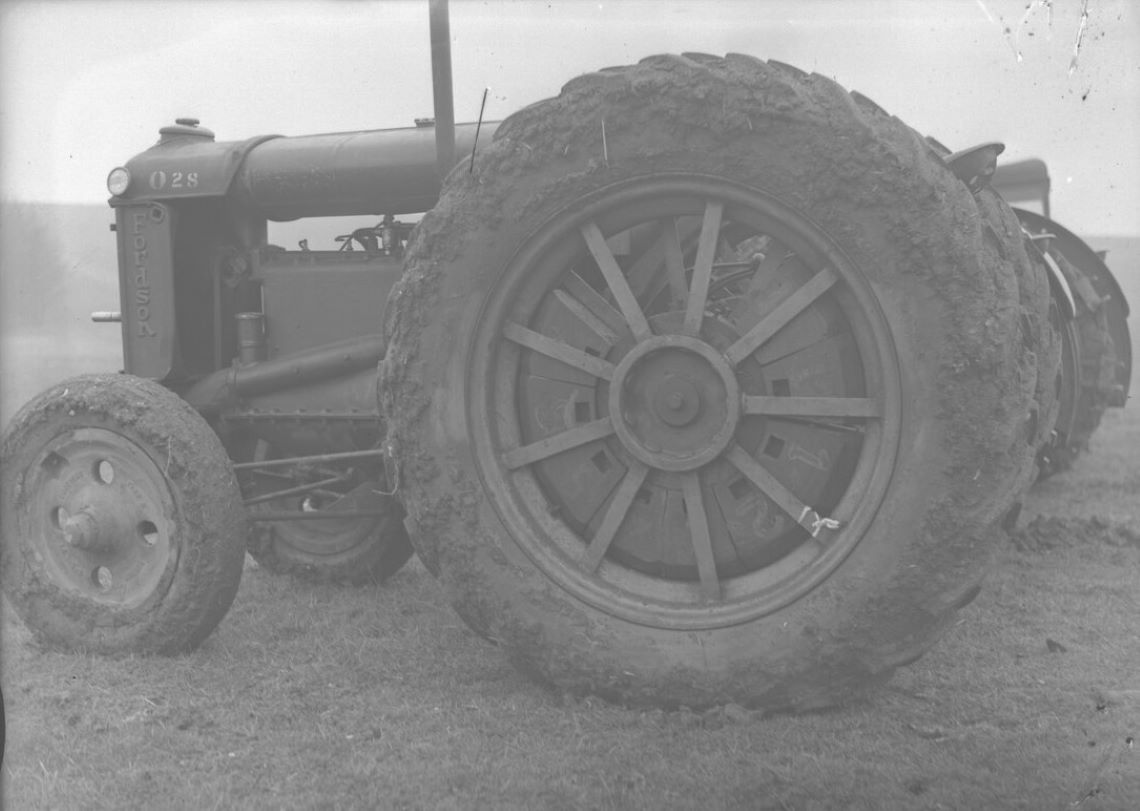
Harry Ferguson – The greatest mind in tractor innovation?
Into the 1930s, the Fordson continued to dominate, adding improvements such as pneumatic tyres which allowed speeds of up to 15mph. This finally established the tractor as the superior plougher to the shire horse, as it was faster, more powerful and could plough for longer periods at a time.Yet the creativity in tractor design was not limited to American corporate giants like Ford. The impact of individual genius still had a part to play. Harry Ferguson, a mechanic from Northern Ireland who originally worked on cars, cycles and planes in his youth, was critical to the next chapter of tractor development. Hired by the Irish Board of Agriculture in 1916 to investigate methods of mechanising food production, Ferguson watched the Fordson tractor trials of 1917 and was so impressed that he travelled to Detroit to meet with Henry Ford himself. Immediately recognising Ferguson’s potential, Ford offered him a job but Ferguson refused, stating that he would only accept a relationship where the two were on level terms.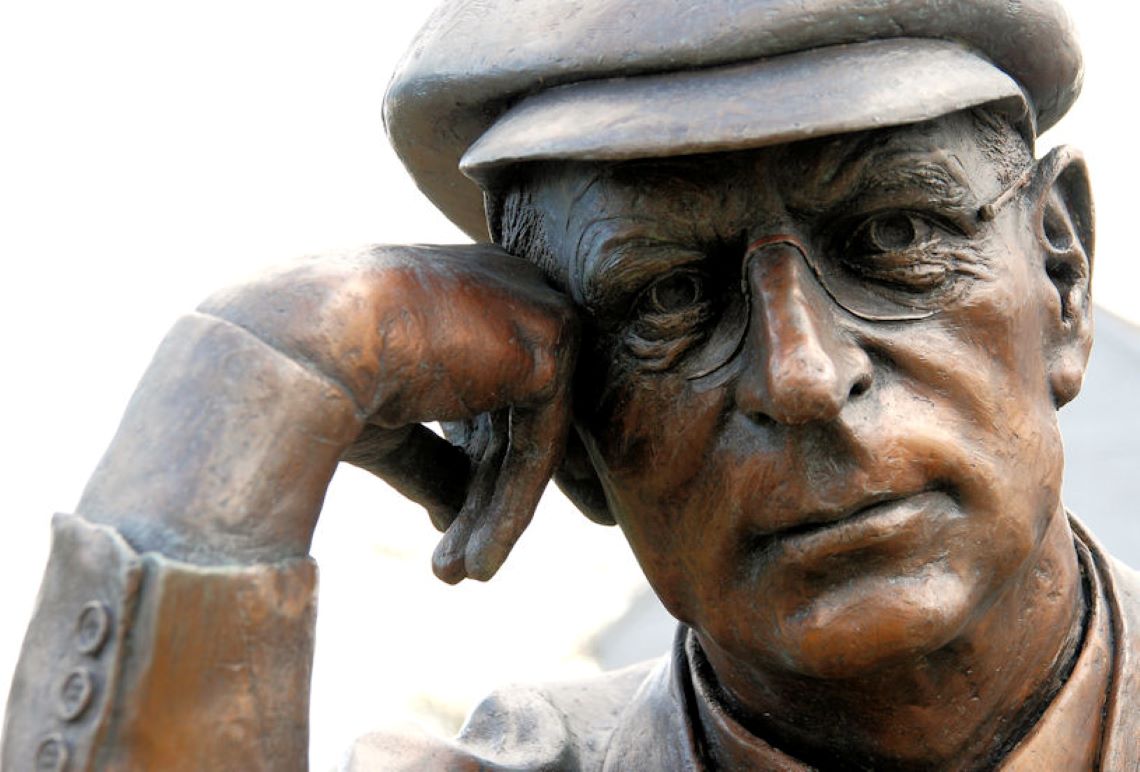
Harry Ferguson was one of the few tractor producers at the time who sought to improve on the Fordson, not just copy it. Most famously, he invented the three point linkage system in 1920, which hitched attachments to the tractor rather than just pulling them behind. A hydraulic version followed in 1926. In addition, Ferguson perfected a system of draught control, an issue which had stumped Ford’s engineers for years. This countered the Fordson’s propensity to tip over backwards when ridden. Ferguson sold his machines through his own company, Harry Ferguson Ltd, and they were built by an English firm, David Brown Ltd. Brown’s manufacturing experience, combined with Ferguson’s inventive genius and knack for sales, began to see real success. 2000 units were sold in the UK between 1936 and 1939.

The handshake agreement
All of this was a preamble to the legendary ‘handshake agreement’ between Harry Ferguson and Henry Ford in 1938. Nothing was ever contractually agreed, but the fitting of Ferguson’s inventions to Fordson tractors created a machine of unmatched brilliance. By the end of World War 2, 90% of all tractors in England were Fordsons, and only three companies were manufacturing and selling tractors in the UK; Ford, David Brown and Marshall. Only one of these – Marshall – was not working to designs perfected by Harry Ferguson.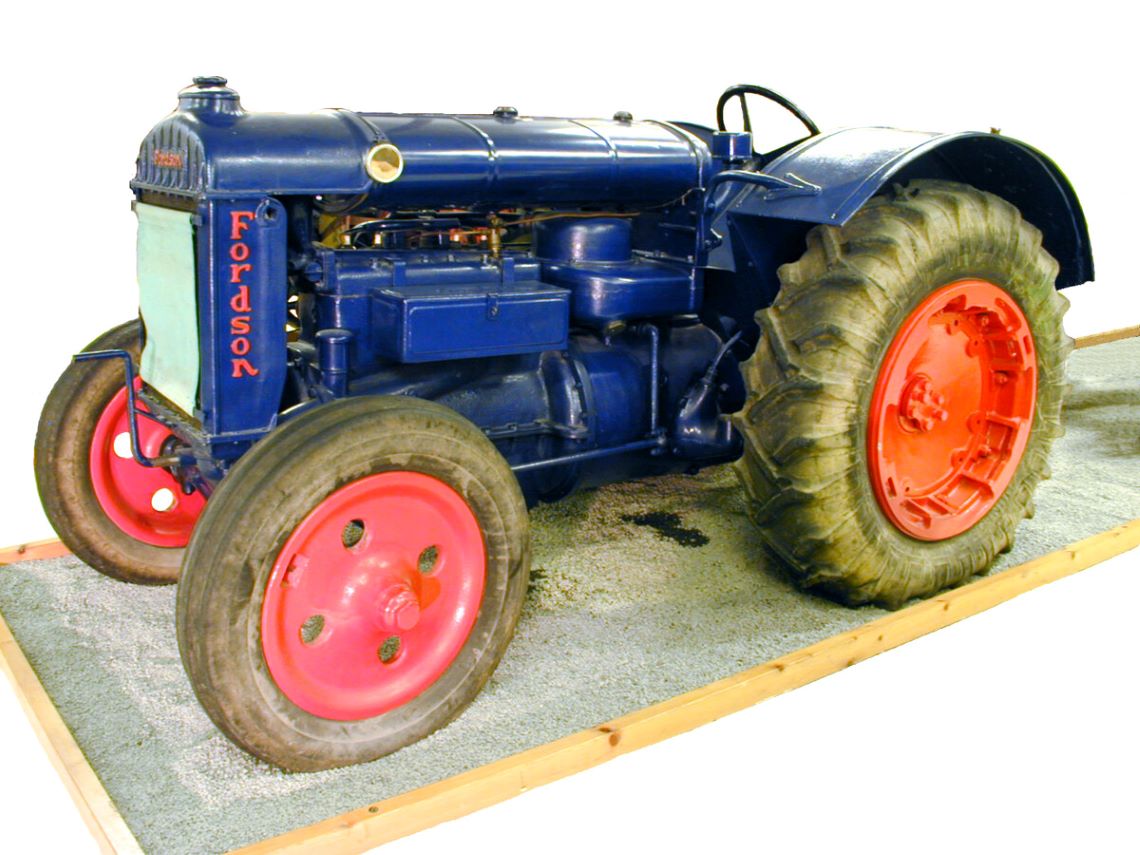
The partnership between Ford and Ferguson did not end happily, however. Unfortunately for Ferguson, his deal with Ford was only ever verbal and so when Henry Ford died in 1947, his company pulled out of their agreement, cutting Ferguson’s turnover from $59 million to $11 million. He sued Ford and began making his own tractors in Detroit, as well as ramping up production in the UK. One result of this was the iconic TE20, which championed three point linkage and came with a choice of 60 implements sold by Ferguson’s company. His influence on the world of tractors was far from done, as he sold his assets to Massey-Harris in 1953, forming the company of Massey-Ferguson. They are still giants in the tractor sector today.
